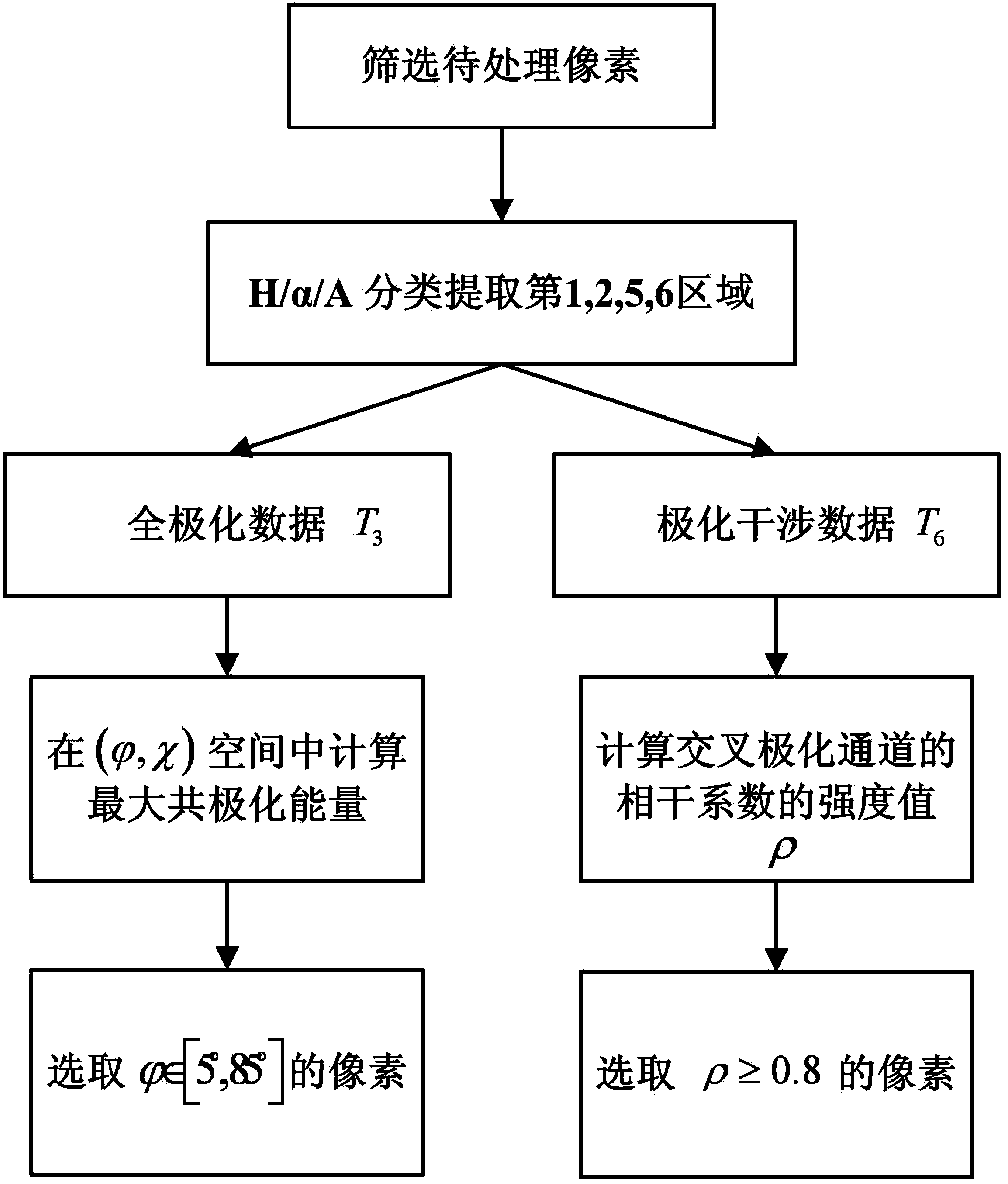Method for decomposing image four components of polarization synthetic aperture radar
A synthetic aperture radar, four-component decomposition technology, applied in instruments, character and pattern recognition, computer parts, etc., can solve the problem of inability to obtain the scattering mechanism of ground objects, overestimating the power of volume scattering components, and the existence of negative power scattering components, etc. question
- Summary
- Abstract
- Description
- Claims
- Application Information
AI Technical Summary
Problems solved by technology
Method used
Image
Examples
Embodiment Construction
[0044] Attached below Figure 1-2 The present invention is further described:
[0045] First of all, according to the usual practice, it is necessary to do some preprocessing on the data, that is, to filter the original image expressed in the form of coherence matrix, so as to reduce the influence of SAR coherent speckle noise on the decomposition results and improve the signal-to-noise ratio of SAR data. LeeSigma filtering method with ideal noise and edge preserving effect.
[0046] Next, implement a method for four-component decomposition of polarimetric SAR images, such as figure 1 As shown, the scattering mechanism used to extract the ground objects in the polarized SAR image is characterized in that it includes the steps:
[0047] ① Filter the polarimetric SAR images, and for the pixels corresponding to the buildings whose orientation angle is 0 degrees in the polarimetric SAR images, turn to step ⑤; for the polarimetric SAR images, the orientation angle is not 0 The p...
PUM
 Login to View More
Login to View More Abstract
Description
Claims
Application Information
 Login to View More
Login to View More - R&D
- Intellectual Property
- Life Sciences
- Materials
- Tech Scout
- Unparalleled Data Quality
- Higher Quality Content
- 60% Fewer Hallucinations
Browse by: Latest US Patents, China's latest patents, Technical Efficacy Thesaurus, Application Domain, Technology Topic, Popular Technical Reports.
© 2025 PatSnap. All rights reserved.Legal|Privacy policy|Modern Slavery Act Transparency Statement|Sitemap|About US| Contact US: help@patsnap.com



